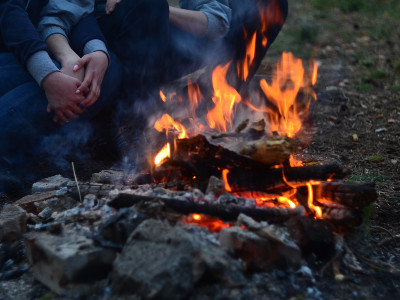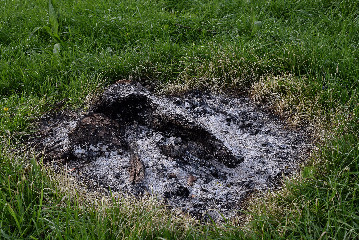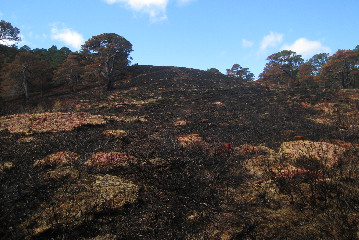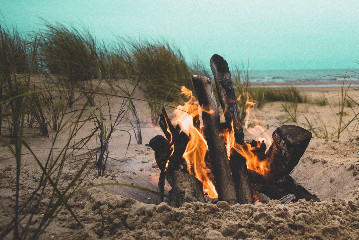
Many people would argue that campfires are a traditional part of camping, but modern, compact and lightweight camping stoves offer a far more efficient and reliable way of cooking your meals.
And against the undeniable romance of sitting around a campfire is the reality of the environmental damage, especially in commonly used or vulnerable areas. Fires can scorch the ground and damage grass, heather and trees, sometimes leading to wildfires that burn woods and hillsides, especially in dry weather.
Even where a fire is kept under control and properly extinguished, the growing number of people who are taking up camping means that gathering deadwood in popular areas can have a significant environmental impact. Dead wood is an essential habitat and resource for animals, fungi and even plants.
The lighting of a fire is allowed as part of the exercise of access rights, if it is done responsibly. However there are a number of important exceptions:
In most circumstances it is wiser to use a cooker than to light a campfire, certainly if you intend to follow the 'Leave no trace' mantra.
There's an excellent article by Ben Dolphin, Countryside Ranger and former President of Ramblers Scotland, which explains the harm and dangers of campfires - while admitting the attraction.

Remnants of a campfire: charred embers and a blackened circle on the ground. It's unsightly and harmful to the environment - especially when many people have the same idea.

A charred hillside in the aftermath of a wildfire caused by a campfire which had smouldered underground for three days before re-igniting.

A campfire on a beach or shingle bank has little chance of spreading, but will still have to be properly cleared up afterwards.

Mountaineering Scotland campaigns on behalf of Scotland's hill walkers, climbers, mountaineers and ski tourers, with over 16,000 members from all walks of life.
Membership of Mountaineering Scotland supports the work we do, from campaigning and protecting mountain landscapes and access, to promoting skills, responsible access and self-reliance for those who visit Scotland's hills, crags and climbing walls.
Membership is excellent value at less than £3 a month for adults, and includes public and civil liability insurance, a range of member discounts and offers, access to great value mountain skills courses, Scottish Mountaineer magazine and more. Read more about our membership benefits.